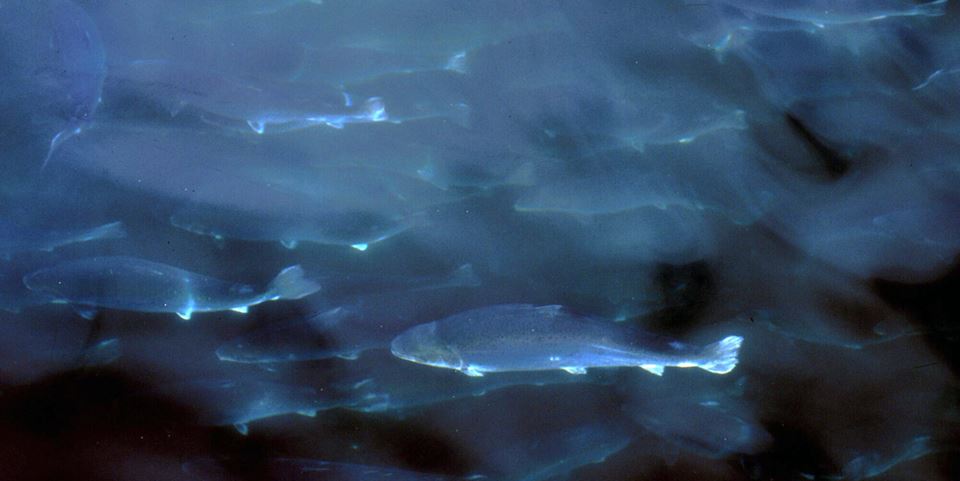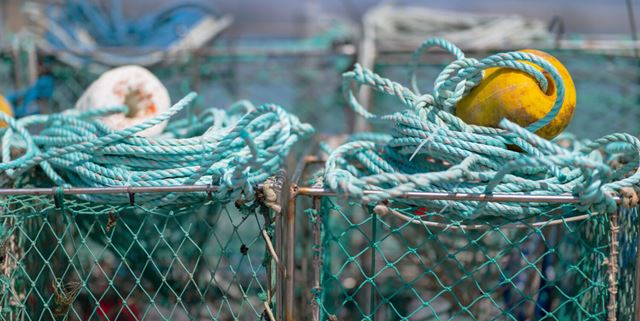Traditionally, salmon smolt are produced in so-called flow-through hatchery facilities. In such systems, the water flows through the hatchery tanks without being reused or recirculated.
However, the majority of hatcheries constructed in Norway today actively recirculate and decontaminate their water. Fish faeces and residual feed particles are filtered from the output water to form a sludge.
Currently, fish farmers have to pay a fee to have this sludge removed.
However, in the near future, as the financial daily Dagens Næringsliv has reported in some detail, materials contained in the sludge may become a resource that future biomarine businesses will be pleased to purchase. Or more specifically, the sludge may be exploited quite literally as a substrate for the cultivation and rearing of plants and other organisms that can replace our existing salmon feed ingredients.
From an expenditure to a source of revenue
Currently, the sludge recovered from hatcheries is used as compost and in the manufacture of fertilisers, as well as to improve soils and generate biogas.
However, having to pay to have the separated sludge removed represents a major expenditure for smolt producers.
However, we believe that the same producers may soon be regarding this sludge as a source of revenue. This is because of the forecast ‘feed squeeze’ that is now threatening Norway’s plans to increase its future salmon production by four- to five-fold.
Rich in nutrients
Currently, Norway obtains two thirds of its salmon feed raw materials from south of the equator.
Global insecurity issues mean that any ambitions for growth in the domestic farmed salmon sector cannot be based on access to feed that relies on such over-extended supply chains.
Moreover, the EU taxonomy, which is a classification system for sustainable commercial activities, requires that we use the most eco-friendly feed available.
This is where the hatchery sludge comes in. Sludge recovered from both hatchery and grow-out facilities is rich in nutrients and can be fed to organisms such as bristle worms, which represent a potential alternative to existing salmon feed ingredients.
Bristle worms as a feed organism
Bristle worms are small, marine-living, annelids. In nature, they are commonly the major prey of fish such as sea trout, flounder and cod.
At present, it is not permitted to commence the sludge-based rearing of bristle worms for use as salmon feed. This is because we are currently uncertain as to whether bristle worms can transfer unwanted components, such as microorganisms, from the sludge they eat into the food chain.
In partnership with the Norwegian Veterinary Institute and the Institute of Marine Research, our team at SINTEF is currently in the middle of a research project looking into this very issue.
To date, we have yet to identify a bristle worm containing either a bacterium or a virus after having eaten sludge to which such organisms have been added. If future research gives us the evidence we need to declare bristle worms as risk-free, these annelids may become Norway’s next mass-produced feed organism.
Food for cultivated microalgae
But even before this issue has been resolved, it is currently permitted to use nutrient salts recovered from ‘salmon sludge’ for the cultivation of plant species, including microalgae. Microalgae also offer a possible source of proteins and lipids and are thus ideal as a feed ingredient.
Microalgae cultivated in this way will also offer us minerals and other valuable compounds such as bioactive components, antioxidants and pigments with significant commercial value.
The biological know-how and the technology we need to commence the sludge-based rearing of bristle worms are already in place, and a cluster of Norwegian companies are now hoping to obtain public funding via the Research Council of Norway’s Green Platform initiative to construct a pilot facility based on this technology at Tjeldbergodden.
Consolidating the circular economy
It has already been demonstrated that bristle worms represent an excellent raw material for salmon feed – a replacement for fish meal and fish oil.
If the sludge from all existing Norwegian hatchery facilities was collected and used to rear bristle worms, we would generate an annual production of 1,400 and 540 tonnes of proteins and lipids, respectively.
This constitutes only a small fraction of the nutrients that the Norwegian aquaculture sector will require. Nevertheless, the reuse of sludge will make a key contribution towards consolidating the circular economy in Norway, which will be entirely in line with the government’s social responsibility initiative “Bærekraftig fôr til laks og husdyr innen 2030” (Sustainable feed for livestock and farmed salmon by 2030), which was launched earlier this spring.
Sludge from marine grow-out facilities
Many future marine-based grow-out facilities will be installed with sludge collection systems. This has been confirmed in a recent public administration committee report (NOU), and will vastly increase the amount of sludge available.
If all the sludge from existing Norwegian salmon production was collected, it would be possible to rear enough bristle worms to generate an annual production of 80,000 and 30,000 tonnes of proteins and lipids, respectively. This is equivalent to about 11 percent of the protein and five percent of the lipids that the Norwegian farmed salmon sector is currently consuming in its marine production facilities.
The key to our ability to exploit sludge generated by the farmed salmon sector is more knowledge. If our research demonstrates that the sludge can safely be exploited for feed production, we will have taken an important step along the road towards a circular bioeconomy in Norway.
This article was first published in the financial daily Dagens Næringsliv on 3 October 2023 and is reproduced here with the permission of the paper.




